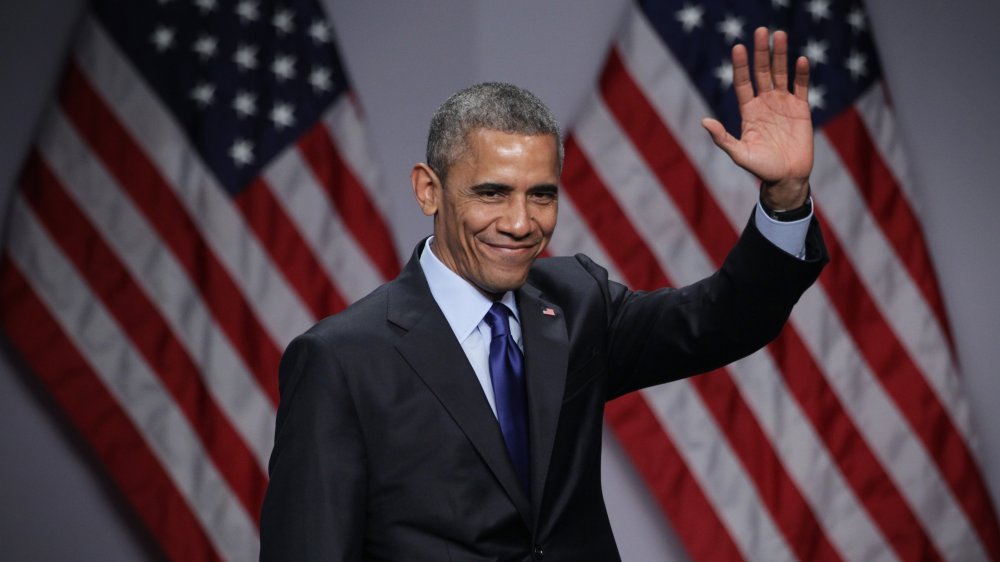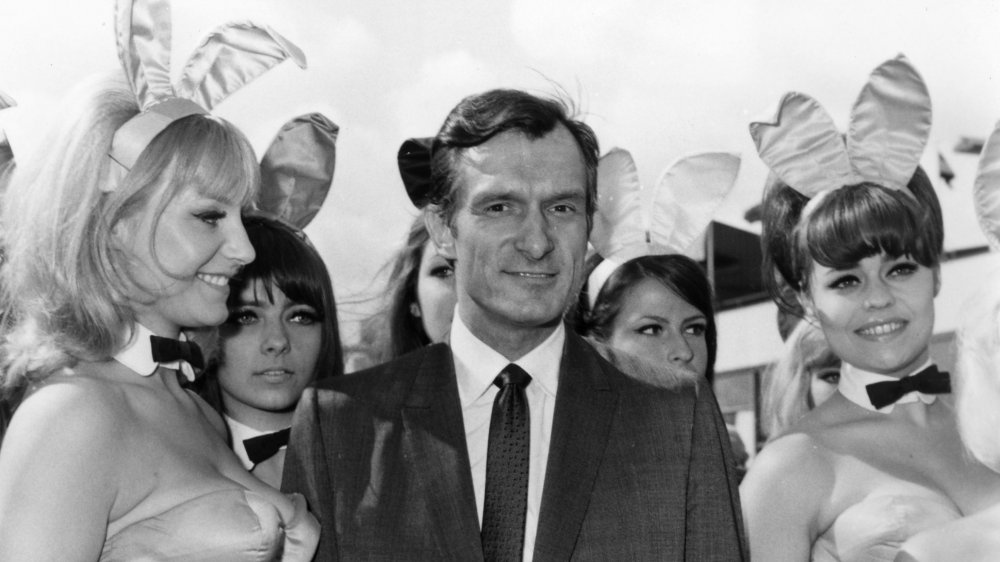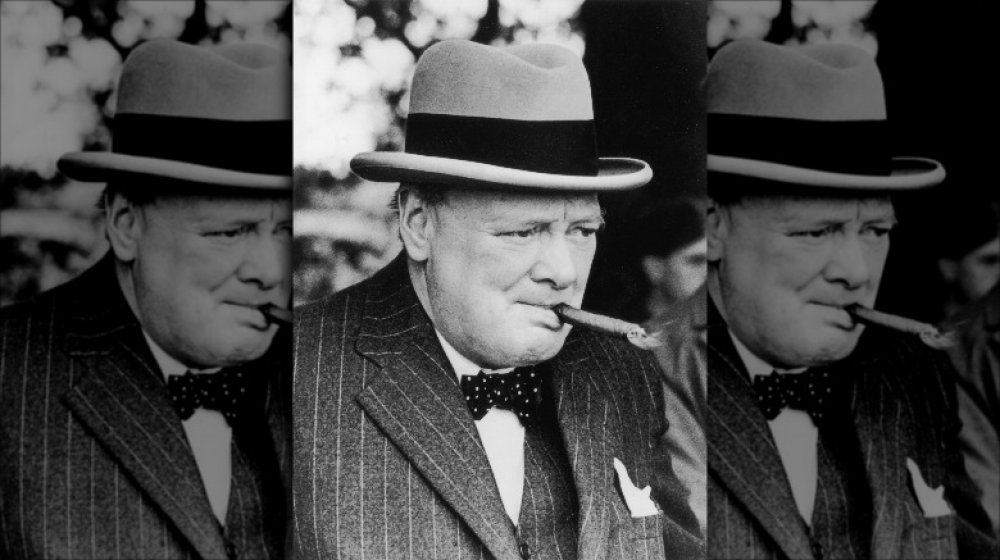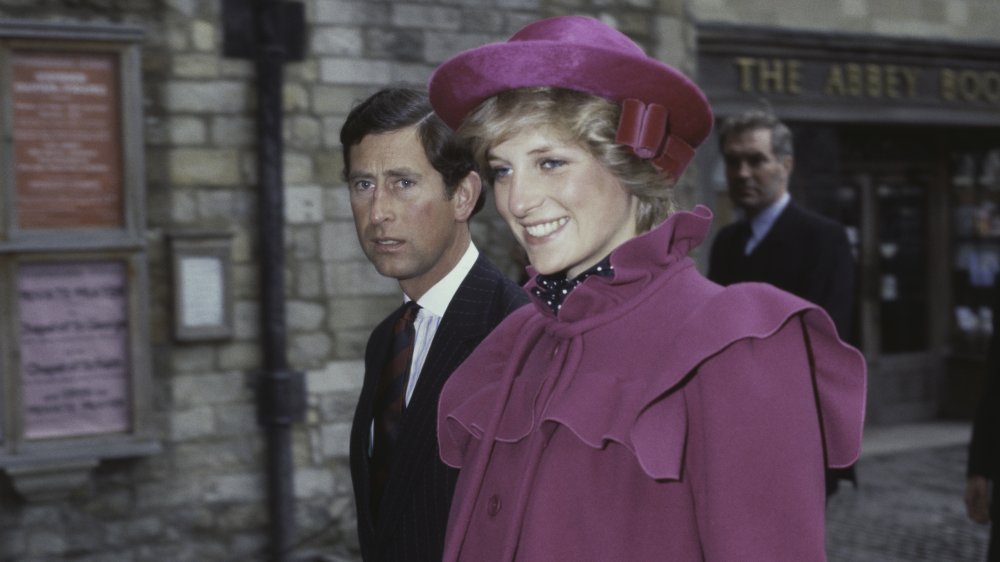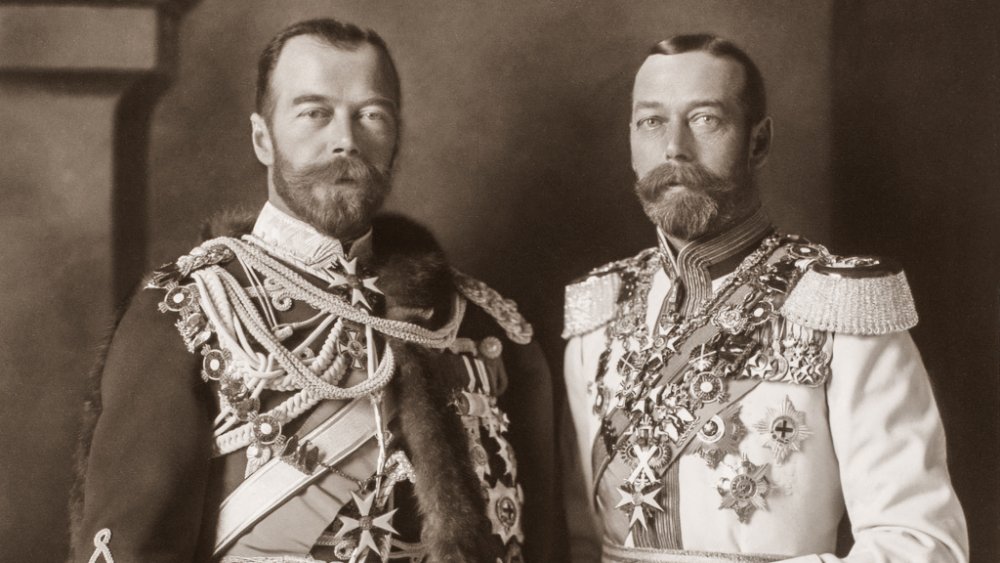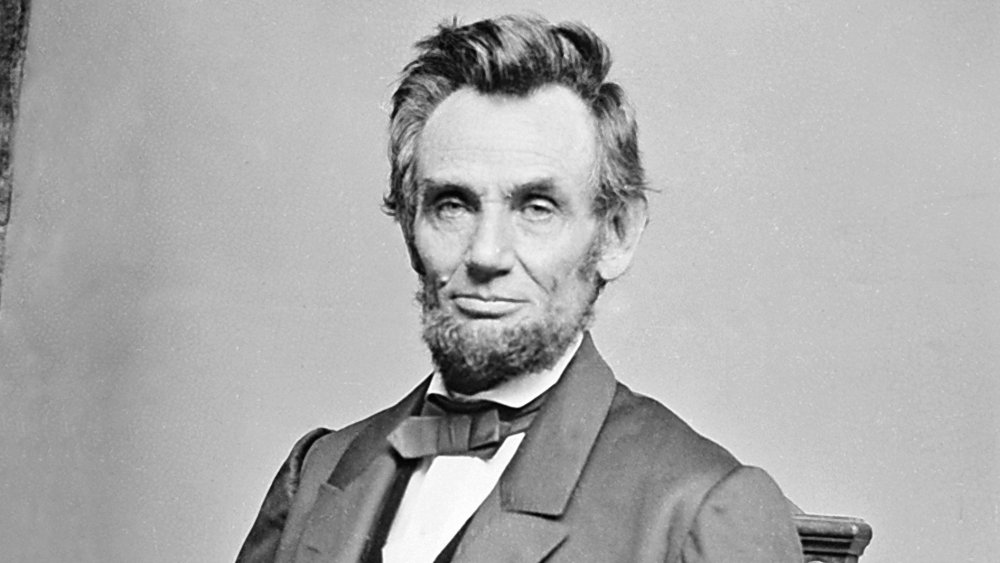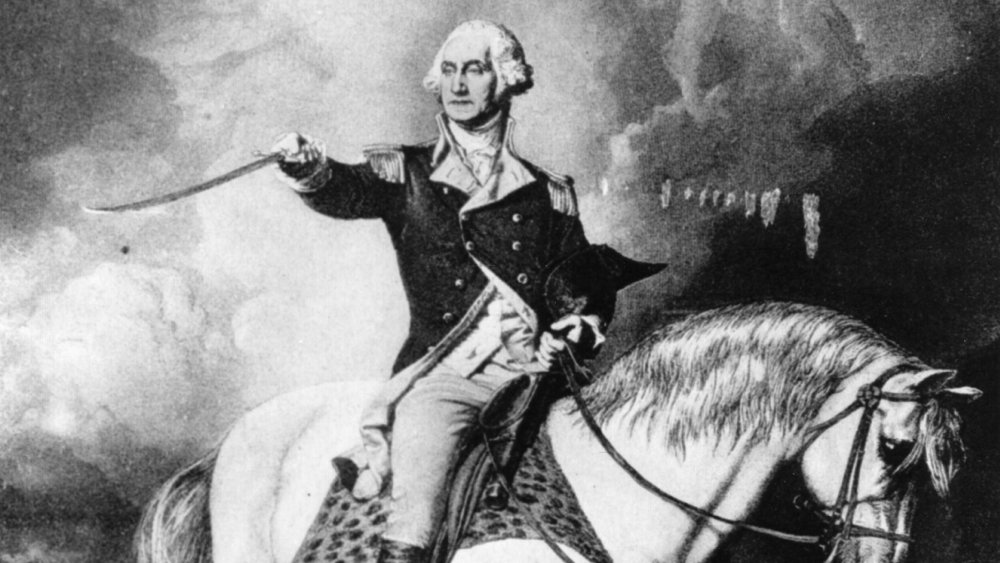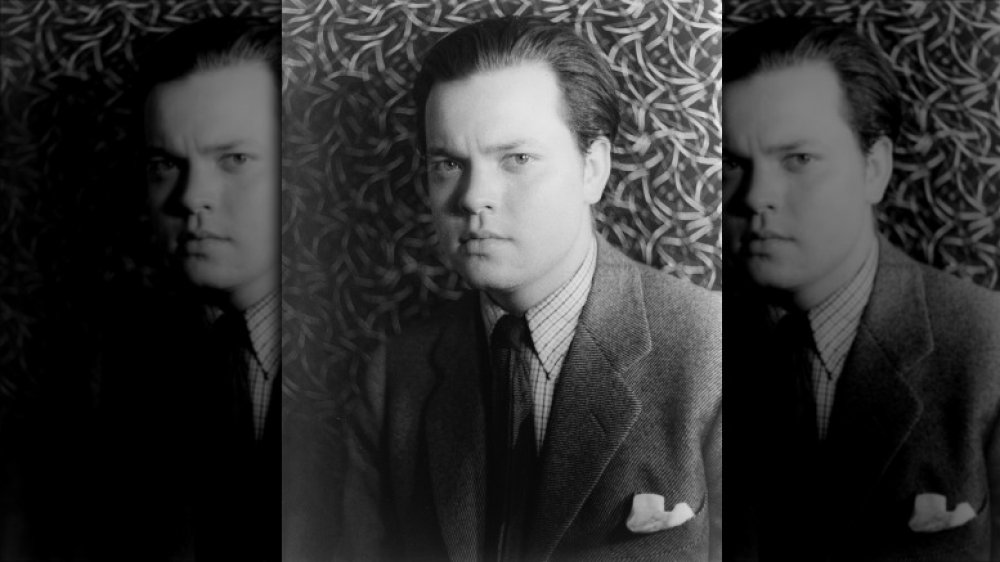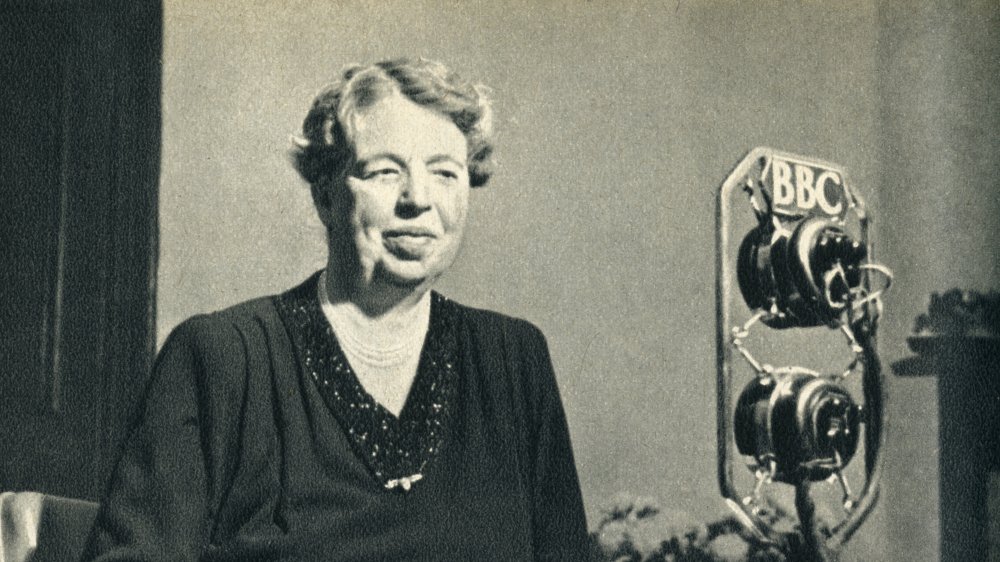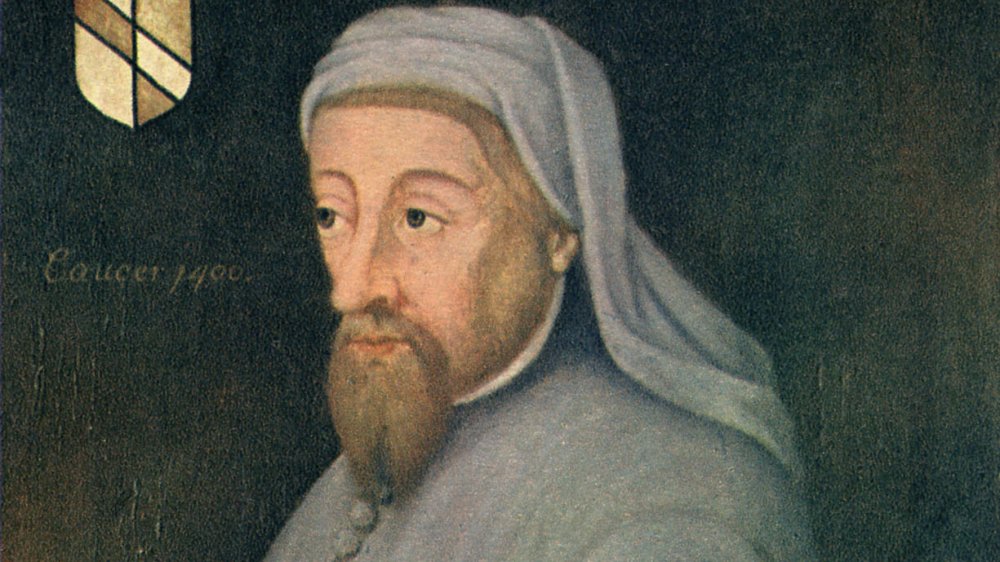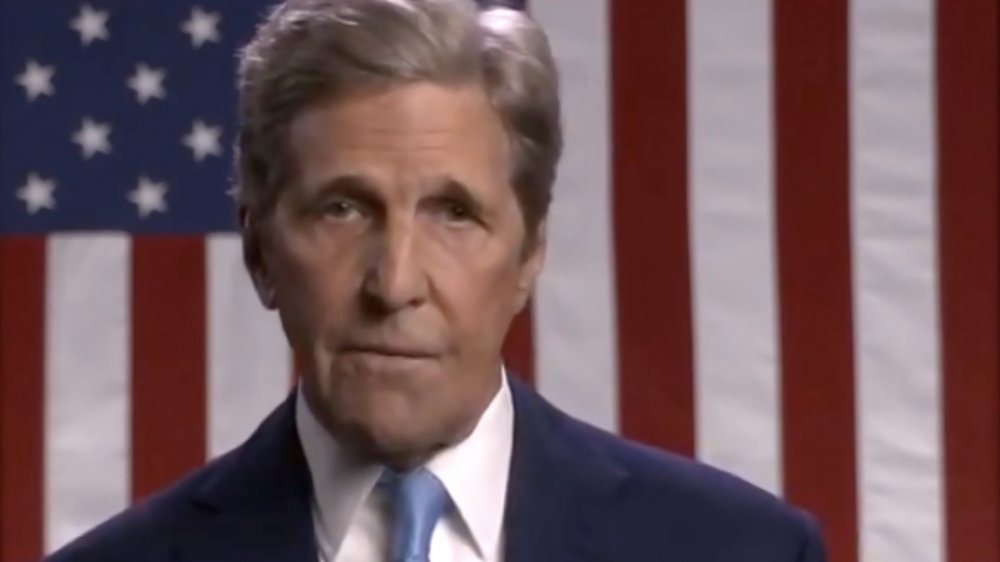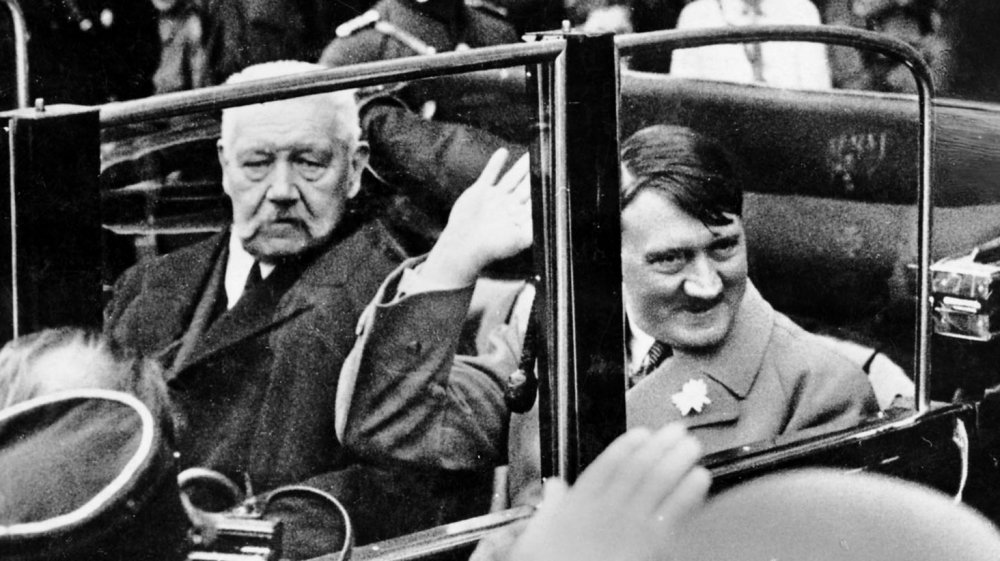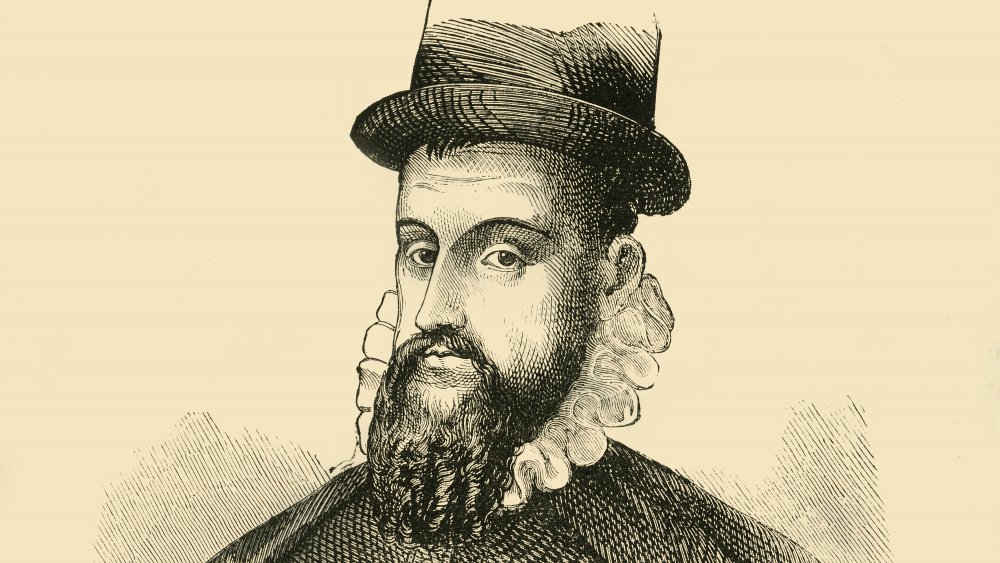Historical Figures You Didn't Know Were Related
The world is a big place. Like, really big. And it's been filled with people for a very long time. The BBC reports that the Population Reference Bureau estimates about 107 billion people have lived on this planet since the beginning of time, living all kinds of different lives in all kinds of different places.
So it's remarkable enough that a few folks become well-known enough that even decades or centuries after their death, we're still talking about them. Those historical figures can sometimes seem a little sterile to the modern person. They exist as stiff, posed paintings or static, unmoving photos, a few speeches, some contemporaneous reporting. Even more modern historical figures can be trapped in news clips and official photos, seeming more like characters in history than real, human beings.
That's why it's sometimes surprising to learn that historical figures that seem to have nothing to do with each other are actually related. As in family. Knowing that some famous folks involved in the most momentous events of their time are cousins or in-laws makes them suddenly human, and so our brains reject the idea. Like the "six degrees of separation" phenomenon, it shrinks our world in ways that seem impossible — although when you consider how many people are linked directly to Genghis Khan, it's not so surprising. So get ready for some shrinkage, because here are some historical figures you didn't know were related.
George W. Bush and Hugh Hefner
At first glance, you might not see much evidence of a familial relationship between former United States President George W. Bush and Playboy founder Hugh Hefner. Bush, after all, is the scion of one of the most powerful political families in the modern-day. As noted by Time.com, he can trace his ancestry back to the Mayflower. Hefner is best known for wearing pajamas and making a mint from racy photographs.
But according to The Independent, Bush and Hefner were cousins (Hefner passed away in 2017). Distant cousins, to be sure, but definitely related. Hefner and Bush are ninth cousins. Which isn't too surprising when you consider that CBS News reports that Hefner himself is actually descended directly from William Bradford, leader of the Pilgrims who took the Mayflower to the new world in the 1600s.
Hefner wasn't entirely pleased with the discovery. A lifelong supporter of the Democratic party, he threw his support behind Senator John Kerry in the 2004 election — which made sense, because Kerry is also a ninth cousin of Hefner's, according to The Hollywood Reporter. Ninth cousins aren't terribly close relations — it means their closest common ancestor is a great-great-great-great-great-great-great-great-grandparent — but it would still get you into the family reunion if someone rented a football stadium to have one.
Winston Churchill and Barack Obama
For a guy whose father was Kenyan, former president Barack Obama is distantly related to a lot of famous people. According to The Guardian, Obama can call six fellow presidents kin: James Madison, Harry Truman, Lyndon Johnson, Gerald Ford, George W. Bush, and George Bush, Sr.
He's also a ninth cousin to actor Brad Pitt, related through a guy named Edwin Hickman who lived in Virginia in the 1700s. And another brain-wrinklingly famous name related to Obama? Confederate General Robert E. Lee.
But according to the Los Angeles Times, the most brain-wrinkling relation that Obama can point to is his other distant cousin, Sir Winston Churchill, perhaps the most famous British Prime Minister of all time. It's one thing to think about an American President being related to other Americans. It's quite another to imagine him related to the jowly, cigar-loving hero of World War II. You simply couldn't conjure up two people who look less related to each other, no matter how many times removed they might be.
Of course, Kenya was a British colony for more than 40 years, offering plenty of opportunities for families to merge in unexpected ways. And it does give credence to the idea that the world is ruled by a surprisingly small number of people.
Princess Diana and Sarah Palin
We all have relatives who seem like they come from a completely different planet. Some of our cousins and siblings share so much of our obvious DNA it's easy to feel connected to them, while others might as well be adopted. And sometimes when you learn that two historical figures are related, however distantly, you can't help but wonder "How does that happen?"
Such is the case of Princess Diana and Sarah Palin. Yes, former Governor of Alaska and Vice Presidential candidate Sarah Palin, the "Mama Grizzly Bear" herself. It's hard to see any relationship between the elegant, poised princess and the conservative, all-American politician, but according to NBC News, the two are tenth cousins. According to Reuters, Palin and Diana's connection dates back to a man named John Strong and his wife Abigail Ford. Strong was born in England in 1605 and sailed for America, where he passed away in 1699.
Nor is Palin's other famous cousin: Franklin Delano Roosevelt, our 32nd president. They share John Lothrop as a common ancestor; Lothrop moved to Massachusetts in 1634, making Palin and Roosevelt ninth cousins once removed. Obviously, political skill isn't a genetic trait, or else Palin might be President herself today, instead of appearing as the Bear on The Masked Singer.
Tsar Nicholas II, Kaiser Wilhelm II, and King George
It's not exactly a secret that the royal families of Europe are all very closely related. According to Insider.com, after centuries of intermarriage (because no one is more conscious of rank than royals), you can actually trace every European royal family back to one person: King George II of England, who ruled from 1727 to 1760. His children and grandchildren went forth and married into all the other royal families, linking them all as a single superfamily.
And that's how we found ourselves in the curious position of fighting a World War that might have been better described as a family squabble. The leaders of the three largest European powers in World War I — King George V of England, Kaiser Wilhelm II of Germany, and Tsar Nicholas II of Russia — weren't just related. According to the BBC, they were first cousins who all called Queen Victoria of England their grandmother. They even looked remarkably alike, and Wilhelm and Nicholas were close enough that according to The Washington Post, they called each other — and we are not making this up — Willy and Nicky.
Willy and Nicky exchanged a series of letters that ended with a terse letter from Wilhelm reading, "I must request you to immediately order your troops on no account to commit the slightest act of trespassing over our frontiers." War was declared that evening, and the world's greatest family feud was underway.
Abraham Lincoln and Tom Hanks
As noted by Quartz, we're all literally related to everyone else in some distant way. At some point in the very distant past, we all share a small group of ancestors, making everyone cousins, albeit so far removed as to be meaningless. As a result, if you look hard enough you'll theoretically be able to find a connection to some very famous and surprising people in your family tree. And learning that two famous people are "tenth cousins once removed" might not seem impressive.
So while it's interesting to find out that actor Tom Hanks is related to iconic president Abraham Lincoln, it becomes kind of amazing when you find out that Hanks isn't that distant a relative: According to Entertainment Tonight, he's Lincoln's third cousin, four times removed. When you're reminded that Lincoln's mother was named Nancy Hanks, it all starts to make sense.
Hanks himself has a good sense of humor about his connection to Lincoln, noting to the Ancestry.com blog that his branch of the family could probably be considered the "poor relations" to Lincoln, whose last direct descendant died in 1985. He also notes that he was aware of the connection as a kid, and thus did all his school reports on Lincoln.
George Washington and Robert E. Lee
History is funny, sometimes. The United States has only been a country for less than 250 years. As Smithsonian Magazine points out, John Tyler was born in 1790 when the country was just 14 years old, became president in 1841 — and he had a grandson who lived until 2020. It's incredible to think about how much the country changed over the course of just three generations of one family.
So it's actually not that crazy to learn from Time.com that two huge figures from American history were related through marriage — George Washington and Robert E. Lee.
What makes it interesting is that Washington was one of the Founding Fathers — and arguably the man who did the most to establish the United States as a cohesive nation with a strong federal government — and Lee was a Confederate general who fought to split the nation in two. But as Reader's Digest explains, the two men were kind of related to each other.
It's often forgotten, but George Washington's wife Martha was married twice. She married Daniel Parke Custis at the age of 18, and he left her a widow with two children when she was just 25. George Washington later adopted her grandson, George Washington Parke Custis, as his son. That makes Mary Custis Lee, the woman who would eventually marry Robert E. Lee, the step-great-granddaughter of George Washington — making these two very different men family.
Orson Welles and John Quincy Adams
John Quincy Adams was our 6th president, and the son of Founding Father John Adams, our 2nd president. Orson Welles was a brilliant actor, writer, and director who pranked the entire country with his 1938 radio broadcast of The War of the Worlds. Adams was born in 1767 and Welles in 1915, so they would seem to have very little to do with each other — yet as MayflowerHistory reports, they're both descended from the same Mayflower passenger: John Alden.
Alden's an interesting figure. According to the Encyclopedia Britannica, he was hired on as part of the Mayflower's crew, working as a cooper (making and repairing barrels and casks). He married passenger Priscilla Mullins, whose entire family died in the first brutal winter after landing. Alden went on to be a prominent figure in the New World, consistently elected to government positions and serving as deputy governor twice. The couple had 11 children, which is a great way to ensure you're linked to almost everyone in America, and became an early romantic meme thanks to being the subjects of Henry Wadsworth Longfellow's poem "The Courtship of Miles Standish" in 1858.
As FamousKin.com makes clear, Alden was in fact the great-great-great-grandfather of John Quincy Adams through his daughter Ruth. Welles is a little more distantly related, having been born a century and a half later, making him Adams' fifth cousin, four times removed.
Eleanor Roosevelt and Alexander Hamilton
Thanks to a certain Broadway musical, everyone knows the basics of Alexander Hamilton's life: Born out of wedlock in the Caribbean, he traveled to America and became one of the key figures in the American Revolution, then a key figure in George Washington's administration, and was finally killed by his frenemy Aaron Burr in a completely ridiculous duel. The fact that he's a 10th cousin, 5 times removed to former First Lady Eleanor Roosevelt isn't so widely known.
According to FamousKin.com, both trace their lineage back to a 15th-century Scottish aristocrat named James Hamilton, who became the 1st Lord Hamilton in 1445. This also means that Eleanor Roosevelt is descended from King James V of Scotland, who married Hamilton's granddaughter Eleanor. In fact, Eleanor's family tree practically bursts with royalty, including the Holy Roman Emperor, Charlemagne, who was her 34th great-grandfather.
Hamilton's family tree is less glamorous; his father basically abandoned his family, and his mother died while he was still young, leaving him an impoverished orphan. Still, the connection between the two underscores the fact that America's ruling elite is actually a pretty small group of people. After all, as History.com notes, Eleanor and her husband, Franklin, were fifth cousins, and she was President Theodore Roosevelt's niece (Franklin was Teddy's fifth cousin).
Geoffrey Chaucer and King Richard III
For many people, their sole knowledge of Geoffrey Chaucer is their brief encounter with The Canterbury Tales in school. Chaucer's classic work of Middle English is an important moment in the development of the language (and is pretty entertaining, once you get past the language barrier), but not everyone realizes that Chaucer was actually pretty powerful and influential in his time. He mingled with kings and other high-powered aristocrats and became the comptroller of the customs for the port of London in 1374 — a plum appointment that required considerable influence.
Some of that influence was due to his marriage. As noted by historian Jone Johnson Lewis, Chaucer married Philippa Roelt, whose sister Katherine Swynford married John of Gaunt (a good friend of Chaucer's). John was the son of King Edward III, and one of his sons from a previous marriage later became King Henry IV, so Chaucer was connected via marriage to the English monarchy.
That means he was also related by marriage to Richard III, the last Plantagenet King of England. Richard was John of Gaunt's great-grandson and was killed at the end of the Wars of the Roses that saw the Tudor line claim the throne.
Ralph Waldo Emerson and John Kerry
For those old enough to remember the presidential election of 2004 (a distant time that now seems very quaint when compared to the brutal political atmosphere of the today) the name John Kerry will always conjure an image of a classic "Boston Brahmin." The term refers to a certain old-money aristocracy in New England, supposedly enlightened and politically involved. Kerry certainly fits the mold. He's so old-money in Massachusetts, he's distantly related to the state's most famous poet, Ralph Waldo Emerson.
Emerson became the leading American intellectual in the 19th century with essays like Nature and Self-Reliance. His poetry and other writings were tremendously influential — both Walt Whitman and Henry David Thoreau named him as a key influence. He was wealthy and his family among the most important in Massachusetts.
As FamousKin.com notes, Kerry and Emerson share a common ancestor dating back to the 17th century: The Reverend Edward Bulkeley. Not only that, Kerry is part of a branch of the mega-wealthy Forbes family, which linked with the Emerson family in the 19th century when Col. William Hathaway Forbes married Emerson's daughter Edith. The Forbes are so wealthy and influential, in fact, SFGate notes that when Forbes married Emerson — again, the daughter of one of America's most respected and celebrated poets — he was marrying "down" on the social ladder.
Martin Luther and Paul von Hindenburg
Sometimes a very extended family can shape the fate of not just a nation, but the world itself. That's the case with Protestant leader Martin Luther, who launched the Reformation in Germany in the 16th century, and Paul von Hindenburg, German war hero and the man who allowed Adolf Hitler to seize power right from under him.
As noted by Geneastar, von Hindenburg was a direct descendant of Luther through his daughter, Margareta Luther. According to author Eric Metaxas, von Hindenburg was very proud of his association with Luther. The relationship between Luther and Hindenburg underscores how a single genetic line can have a profound influence on history.
Considering that connection, it's not surprising that von Hindenburg was a member of the Lutheran Church. In fact, writer Andrei Tapalaga notes that von Hindenburg was considered to exemplify the Lutheran faith and values, which becomes ironic when you consider Luther's tilt towards antisemitism in his later life, which had a direct influence on Hitler and the Nazi ideology. As President of Germany, an aging and possibly senile Hindenburg basically allowed Hitler to weasel his way into control of the country, creating a kind of horrifying time loop in history.
Hernan Cortes and Francisco Pizarro
Sometimes you have to wonder if a family's genetic traits make it ideally suited for a specific role in history. Hernán Cortés and Francisco Pizarro were Spanish explorers and conquistadors — and, as noted by the New World Encyclopedia, second cousins, once removed, through Pizarro's father.
What's fascinating about this is that these two men managed to almost completely destroy two of the greatest civilizations in the world — all within the space of a few years. As LiveScience explains, Cortés conquered the Aztec Empire in the early 1500s — and brought smallpox with him. The Aztecs, who had never been exposed to the disease, were decimated by it. Cortés almost single-handedly destroyed a civilization that had thrived for centuries.
Remarkably, his cousin repeated the trick a few years later. As History.com reports, Pizarro traveled to South America in the 1530s and tricked the emperor of the Incas, Atahuallpa, into an ambush. When Atahuallpa offered him a tremendous amount of gold for his ransom, Pizarro agreed —and then put him on trial and had him executed anyway. When he received reinforcements from Spain, Pizarro made quick work of destroying the leaderless Incan Empire, which had existed for centuries. Two cousins managed to more or less destroy the indigenous cultures of two continents, and yet few people today realize they were related.
